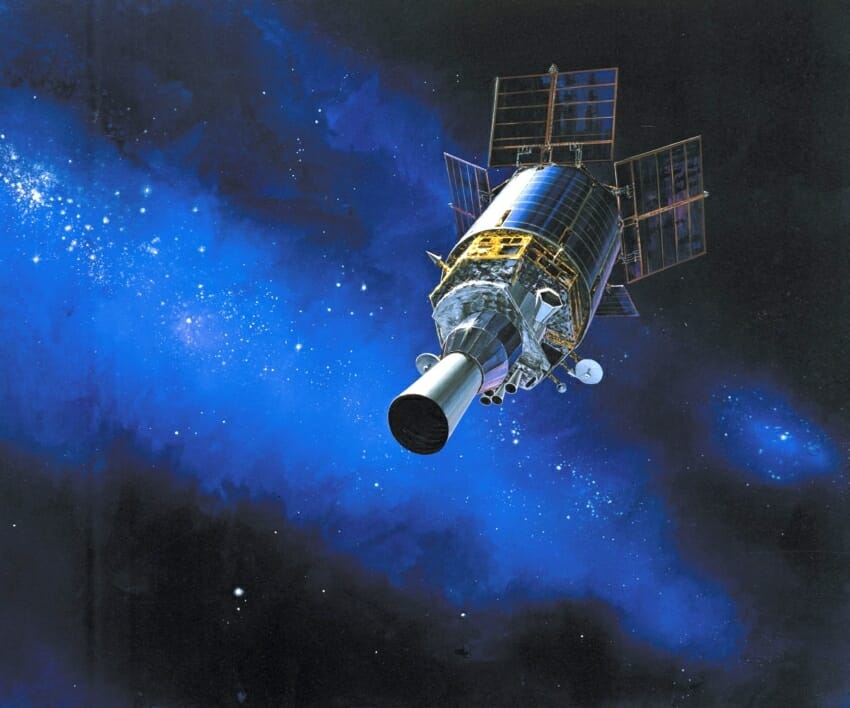The U.S. Space Force and Arizona State University signed an agreement Tuesday making ASU the newest member of the service’s University Partnership Program.
USSF Chief Technology and Innovation Officer Lisa Costa joined ASU President Michael M. Crow on ASU’s Tempe campus to finalize the agreement and to learn more about the university’s space initiatives and capabilities.
Home to the School of Earth and Space Exploration and named U.S. News & World Report’s most innovative university in the nation for seven consecutive years, ASU will now assemble partnerships and models to collaborate with the Space Force on research and education.
“Our partnership today with ASU will pave a path to higher education and workforce development,” Costa said. “With a stellar reputation in space engineering, defense research and innovation, ASU is the perfect addition to the program and will be instrumental in helping us take the Space Force mission into the future.”
ASU is one of the fastest-growing research universities in the nation, topping $677 million in research expenditures in 2021. ASU is ranked sixth in the U.S. for research expenditures among universities without a medical school. The university also ranked first in the U.S. in transdisciplinary research and third nationally for NASA-funded research expenditures.
“We are certainly no stranger to space,” Crow said. “ASU is a leader in exploring the universe, from planets to asteroids and from the Milky Way to the most distant galaxies. We are excited to work with Space Force to continue on this path toward discovery and insight.”

ASU’s faculty, researchers, staff and students have participated in more than 20 space missions. The university leads the upcoming NASA space missions Psyche and LunaH-Map, and developed and runs instruments for scientific missions to the moon, asteroids and planets.
ASU scientists and engineers are currently advancing various projects for future and current space missions, including:
• LunaH-Map is a small, shoebox-size spacecraft built at ASU to analyze water content at the lunar south pole to set up the conditions for future exploration.
• The Psyche mission will seek answers to how planets are formed by analyzing the metal-rich Psyche asteroid orbiting the sun between Jupiter and Mars.
• Europa Clipper includes the Europa Thermal Emission Imaging System built by ASU scientists and engineers to investigate Jupiter’s moon Europa.
• ShadowCam is a telescope instrument built by ASU experts to explore and map the moon’s permanently shadowed regions in search of evidence of frost or ice deposits.
“We embrace this new U.S. Space Force partnership and look forward to future collaboration at all possible levels,” Crow said. “Whether we help develop the Space Force workforce through formal education or assist with initiatives to bolster national defense objectives, we are all in.”
ASU’s experience with defense research will be instrumental in creating future programs with the USSF. The university maintains multiple programs, centers and initiatives with the Department of Defense that address current and emerging security challenges — such as cybersecurity, disinformation, artificial intelligence and homeland security operations.
USSF’s University Partnership Program seeks to recruit, educate and develop their workforce, along with engaging a world-class research and technology base to secure the nation’s interests and maintain an advantage in space.
The UPP’s four goals are to establish opportunities for world-class research, advanced academic degrees, and workforce and leadership development for USSF Guardians; identify and pursue areas of mutual interest with member universities, individually and collectively; establish scholarship, internship and mentorship opportunities for university students and ROTC cadets; and recruit and develop diverse officer, enlisted and civilian Guardians with a particular focus on science, technology, engineering and mathematics.




